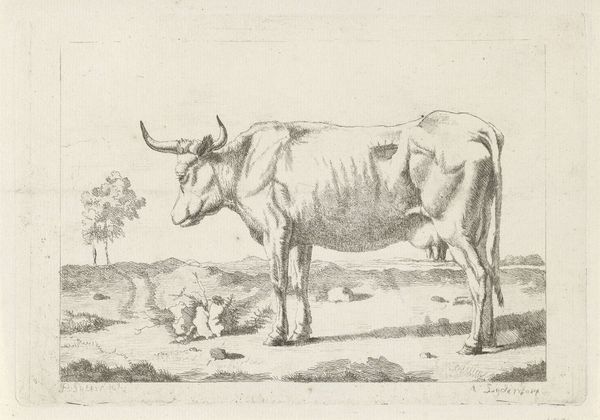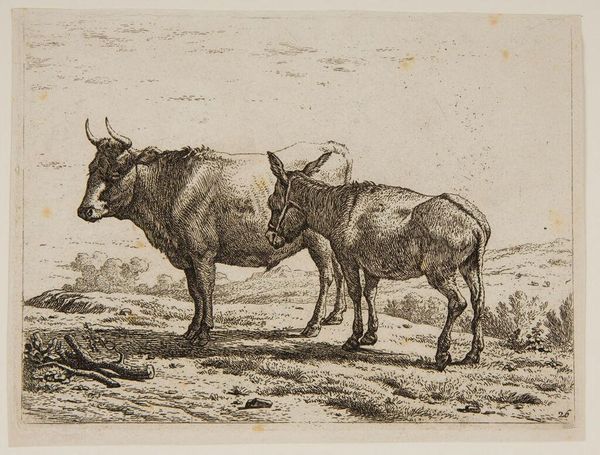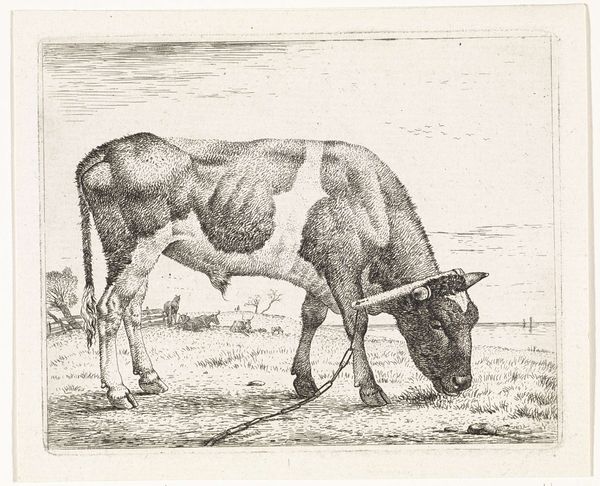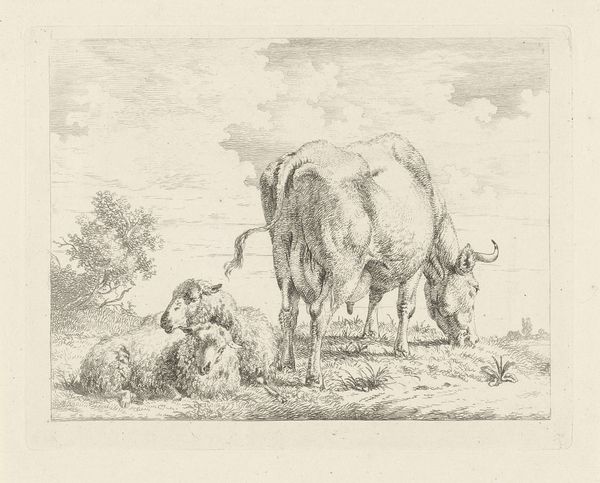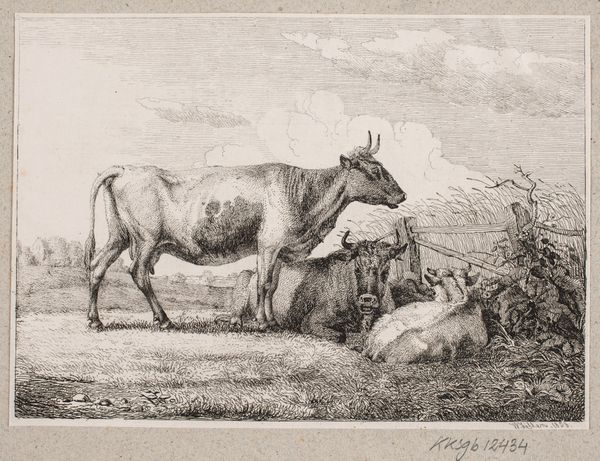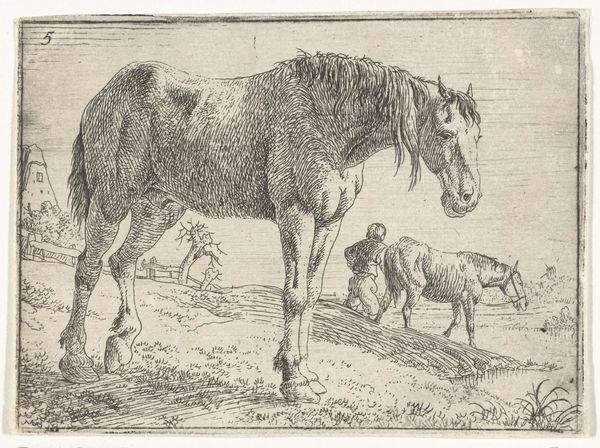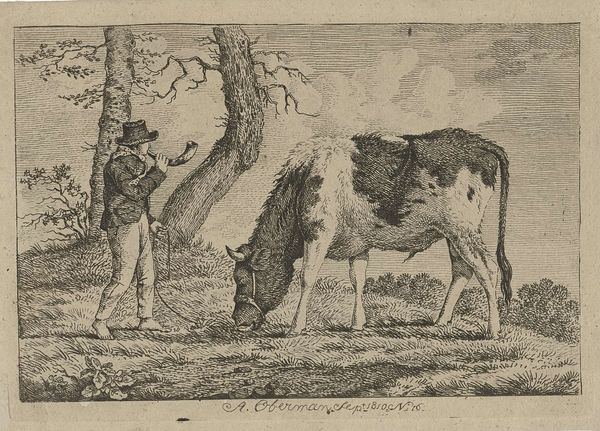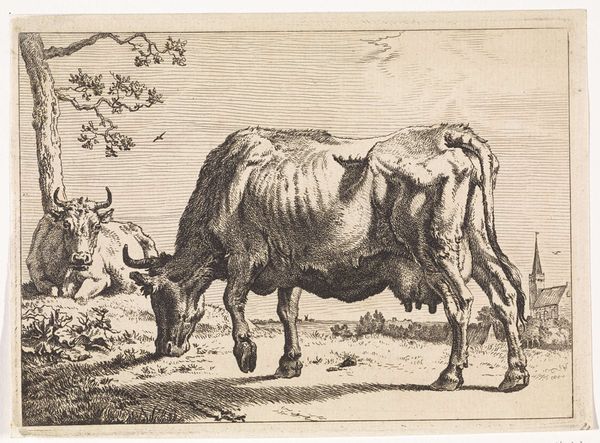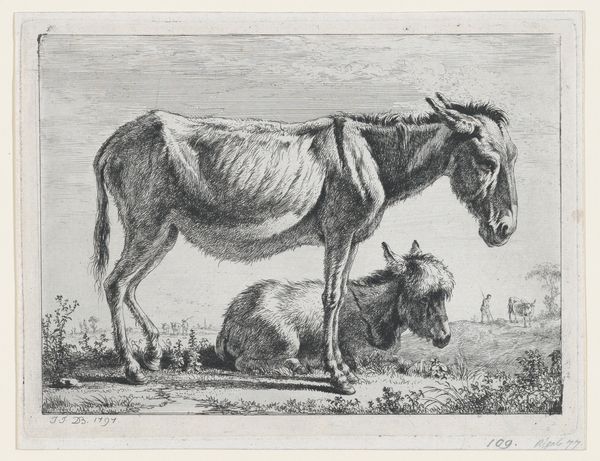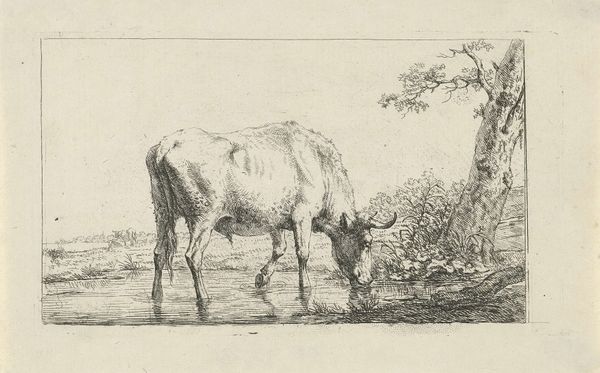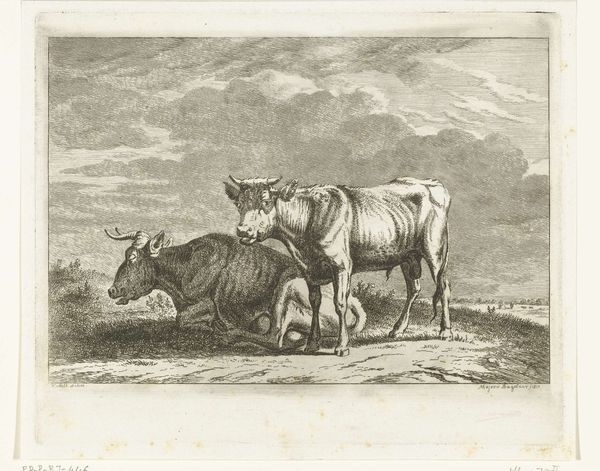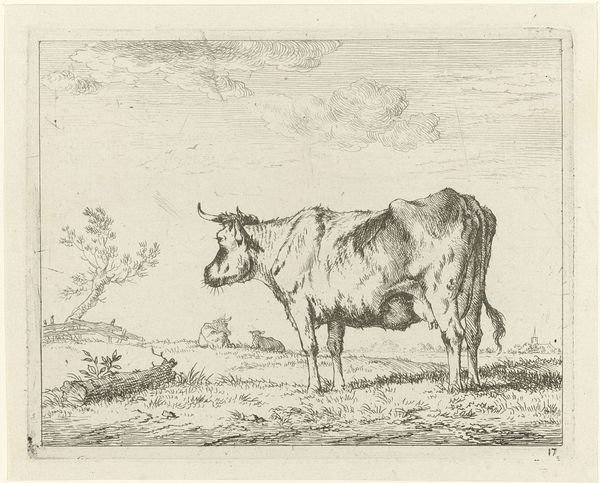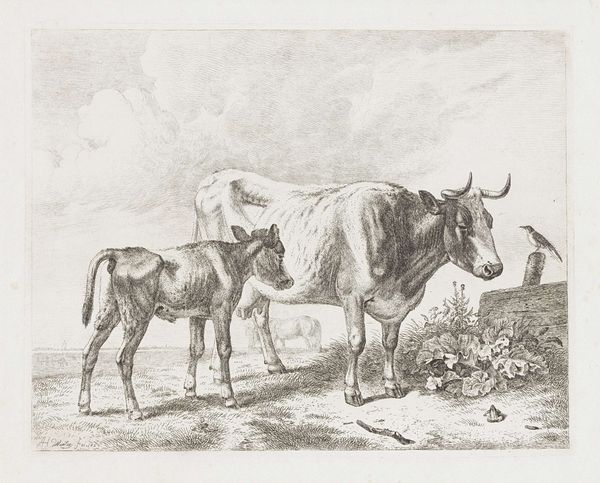
drawing, print, etching
#
drawing
# print
#
etching
#
landscape
#
figuration
#
genre-painting
#
realism
Dimensions: height 165 mm, width 221 mm
Copyright: Rijks Museum: Open Domain
Curator: Here we have "Koeherder," an etching by Abraham Hendrik Winter, created in 1854. My immediate impression is one of understated balance. The positioning of the boy against the bulk of the cow…it's remarkably well-composed. Editor: I feel a strange sense of melancholy emanating from this print. The stark, almost severe, depiction of rural life, the horn, the posture…there's something ancient about it. A timeless tableau of the shepherd's calling and his flock. Curator: Yes, but notice the almost clinical precision of the etching technique itself. Winter's control of line weight and texture provides definition and highlights in what could otherwise be a very simple image. See how his controlled hatching accentuates the cow's emaciated state. Editor: That leads directly to the symbolic weight. The cow, rather gaunt, suggests the hardships of agricultural existence and yet carries so much value and so much weight for a young Koeherder. What does that say about labour and its symbolic position at the time? Curator: Perhaps Winter’s visual rhetoric deliberately pits vulnerability against endurance? Or the fleeting against the permanent? There is no other sign of activity than the cow, the shepherd, and his call. Editor: Also, that smallness! It feels quite deliberate. The vast, featureless plane. This recalls earlier Northern Renaissance symbolism relating to humility before an enormous, sublime creator. The land echoes the weight of an inevitable providence. Curator: Possibly, but focusing on the forms, the flatness of the landscape created by Winter’s technical control allows us to view both figures clearly as distinct components, related only through proximity and their specific place in the scene. They become simplified icons. Editor: I see, distilling elements in order to reveal deeper narrative currents. What begins as a modest genre scene can thus tap into greater themes of toil, faith, and cyclical existence. It suggests much through stark simplicity. Curator: Indeed. It shows that within simplicity itself complexity can come to fruition. Editor: Thank you, that makes me reconsider my first reaction, that balance between labor and faith feels palpable now.
Comments
No comments
Be the first to comment and join the conversation on the ultimate creative platform.
